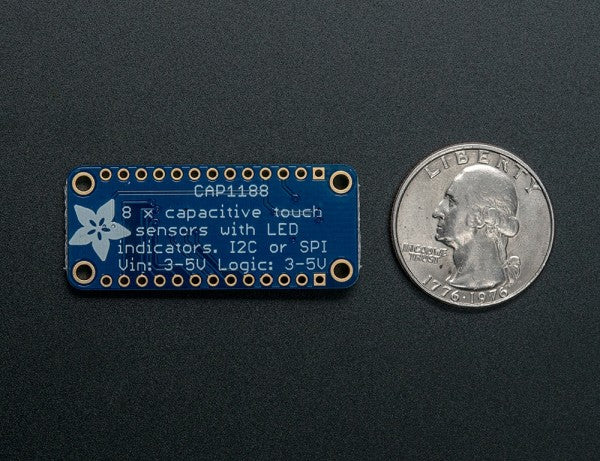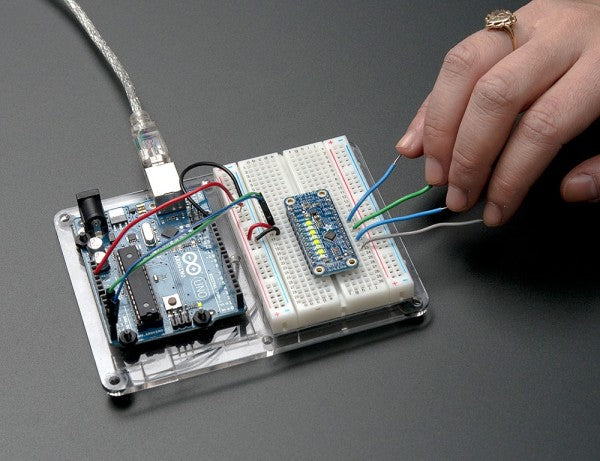Beschreibung
Add lots of touch sensors to your next microcontroller project with this easy-to-use 8-channel capacitive touch sensor breakout board, starring the CAP1188. This chip can handle up to 8 individual touch pads, and has a very nice feature that makes it stand out for us: it will light up the 8 onboard LEDs when the matching touch sensor fires to help you debug your sensor setup.
The CAP1188 has support for both I2C and SPI, so it easy to use with any microcontroller. If you are using I2C, you can select one of 5 addresses, for a total of 40 capacitive touch pads on one I2C 2-wire bus. Using this chip is a lot easier than doing the capacitive sensing with analog inputs: it handles all the filtering for you and can be configured for more/less sensitivity.
Comes with a fully assembled board, and a stick of 0.1" header so you can plug it into a breadboard. For contacts, we suggest using copper foil, then solder a wire that connects from the foil pad to the breakout.
Getting started is a breeze with our Arduino library and tutorial. You'll be up and running in a few minutes, and if you are using another microcontroller, its easy to port our code.
Technical Details:
- CAP1188 Datasheet
- Dimensions: 42mm x 18mm (1.6" x 0.7")
- Weight: 2.5g
Verschlüsselte Zahlung
Ihre Zahlungsinformationen werden sicher verarbeitet. Wir speichern keine Kreditkartendaten und haben auch keinen Zugang zu Ihren Kreditkartendaten.
Zolltarifnummer:
Herkunftsland:
Das hängt davon da, wo Sie sich befinden. Nach Übergabe der Bestellung an UPS beträgt die Lieferzeit in Deutschland ca. 2-3 Tage, innerhalb Europas ca. 1 Woche.
Wir versenden unsere Artikel mit unserem Versandpartner UPS.
Wenn wir Ihre Frage noch nicht beantwortet haben, können Sie uns kontaktieren, und wir werden uns so schnell wie möglich bei Ihnen melden.



